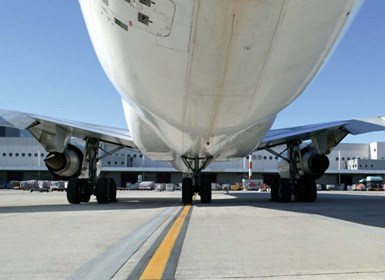The art of resisting rain, sun and frost
Industrial floors for exteriors
Loading and unloading areas, used for logistics, transit and parking purposes: industrial floors for exteriors are constantly subject to wear due to atmospheric agents – thermal shocks due to cycles of icing and de-icing or to high temperature increases – and to the transit of vehicles. It is important that the floors are made properly; to do so requires greater focus and effort than for interior floors, taking great care to respect precise criteria that will determine their performance and durability over time.
From design to execution
During the design phase, it is fundamental to understand the environment and the situation into which the floor will be inserted, with a view to selecting the right materials and methods to ensure an excellent result. One important property that external floors must have is a minimum incline of 1.5 cm per metre (1.5%), so that rainwater can flow away towards the drains, thus limiting or avoiding the risk of service areas being flooded following heavy rains.
Another crucial element is the concrete mix, which must be properly designed. Indeed, in compliance with the UNI EN 206-1 and UNI 11104 standards, the environmental conditions that exterior floors must cope with correspond to the XF3 exposure class. A concrete with this formulation offers a water/cement ration of lower than 0.50, and as such it has a low porosity, which makes it particularly suitable for dealing with frequent rainfall and icing/de-icing.
When water penetrates the concrete and transforms into the solid state, it gradually increases in volume, causing the “separation” of the surface part of the flooring, which in turn results in the emergence of the underlying aggregate. This is why it is important to design the concrete mix so that the pores of the flooring are closed over as rapidly as possible, rendering it more waterproof. Another precaution that can be taken to avoid the floor being damaged by water or frost is to take time over the sealing of the joints, since there are the parts if the floor that are most susceptible to water infiltration.
The concrete casting must be carried out under suitable atmospheric conditions: the temperature should not be high, and so in summer it is important to avoid direct sunshine by casting the floor at night. Heat can compromise the successful completion of the project, because the setting times are shortened, thus reducing the time available to complete all of the necessary operations.
To guarantee the durability of the flooring, it is important to take a number of simple measures, such as abandoning the common, mistaken habit of spreading salt over the surface to melt sheets of ice. This practice actually increases the size of any cracks in the concrete, because the salt triggers a reaction between the alkalis and the aggregates, resulting in the separation of a small circular area (called the “pop out”) and the consequent corrosion of the surface. Rather than salt, there are specific de-icing products on the market that do not set of the alkali-aggregate reaction and do not damage the floor in any way.
Thanks both to our many years of experience and to the systematic approach that marks us out, Recodi provides an unrivalled service also for outdoor flooring, with effective solutions that ensure your floor continues to delivery excellent performance over the long term.

